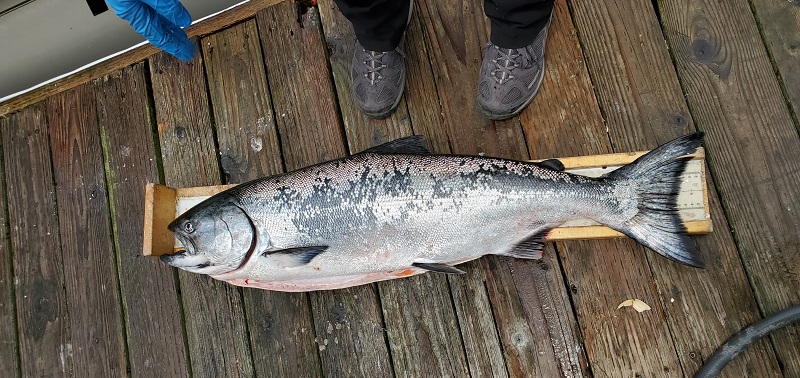U.S. Army Corps Ordered to get Salmon past Yuba River Dams
Nevada City, CA – On February 29, 2012, the National Marine Fisheries Service (“NMFS”) released a formal decision finding that the operation of two Army Corps of Engineers dams and related water diversions on the Yuba River is likely to jeopardize the survival of three species of endangered fish: spring-run Chinook salmon, steelhead, and green sturgeon.
The decision, known as a biological opinion, was issued as the result of a lawsuit filed in 2006 by the South Yuba River Citizens League (“SYRCL”) and Friends of the River. In 2010, federal judge Lawrence K. Karlton found the previous biological opinion did not comply with the Endangered Species Act and required NMFS to conduct a new analysis which it released on Wednesday.
SYRCL Executive Director Caleb Dardick said, “The new biological opinion is an important first step towards preventing the extinction of Yuba River salmon, steelhead and sturgeon. These threatened fish need to be able to move freely upstream of Daguerre Point and Englebright dams to the upper Yuba River watershed.”
Spring-run Chinook salmon were once plentiful in the Central Valley, with over 600,000 returning to their natal streams each year. But the construction of impassable dams in the 20th Century reduced the habitat available to the species by 80%, resulting in substantial population declines. In 2011, fewer than 5,000 spring Chinook returned to the Central Valley, a reduction of over 99% from historical levels. Removing barriers to upstream fish passage is urgently needed to halt this continuing slide toward extinction.
Dardick emphasized that the biological opinion itself will not save the Yuba River fish, unless the Corps actually complies with the requirements. “What is crucial now is for the agencies with responsibility over these dams to show leadership by fully implementing the actions outlined in the biological opinion without delay,” he said.
The biological opinion finds that the Corps’ Daguerre Point and Englebright dams have contributed to population declines for the three species, due mainly to the fact that the dams block the fish from migrating upstream to adequate spawning habitat. By forcing the fish to spawn in degraded and inadequate spawning habitat below Englebright Dam, salmon suffer from competition for scarce spawning space, disruption of gravel spawning nests, and interbreeding with hatchery strays and other runs, which is diminishing the fishes’ genetic vigor, resulting in weaker fish stocks. Daguerre Point Dam is a complete barrier to the upstream migration of green sturgeon.
Based on these and other findings, NMFS concludes that the Corps of Engineers must take a number of actions to reduce the harm being caused to the threatened species. Most importantly, the biological opinion requires the Corps to implement a program to provide fish passage past the dams by 2020. In addition, the biological opinion calls for annual additions of spawning gravel below Englebright Dam to replace gravels captured by the dam and the restoration of habitat through removal of rock debris left over from the construction of the dam more than 70 years ago.
“The authorities responsible for recovering threatened fish stocks have accurately assessed the situation on the Yuba River and finally required actions that will substantially reduce extinction risk for Central Valley populations of salmon, steelhead and sturgeon” says Gary Reedy, Fisheries Biologist and Science Director for SYRCL. “The new requirements include a variety of helpful short-term measures, and yet full fish passage is what is needed to actually avoid the substantial harm to the survival and recovery of the species being caused by Daguerre and Englebright dams, as the biological opinion concludes.”
Echoing the biological opinion’s call for collaboration among all stakeholders, Caleb Dardick pledged his organization’s commitment to working together to find the most effective means of achieving the biological opinion’s mandates. “We believe this decision signals that the preservation of these species is not the responsibility of any one organization alone, but of all parties in the Yuba River watershed,” Dardick said. He pledged his organization’s support for efforts to secure congressional appropriations, where needed, for the implementation of these projects and for participation in all stakeholder planning proceedings.
“Although the Corps claims that the biological opinion requires actions that are outside of the Corps’ authority, NMFS took care to enumerate the various laws and Corps regulations which give the Corps the necessary authority,” said Christopher Sproul at Environmental Advocates, lead counsel for SYRCL in the lawsuit.
For a copy of the Biological Opinion, please see below; also recent coverage in the Sacramento Bee.
Did you enjoy this post?
Get new SYRCL articles delivered to your inbox by subscribing to our ENews.



